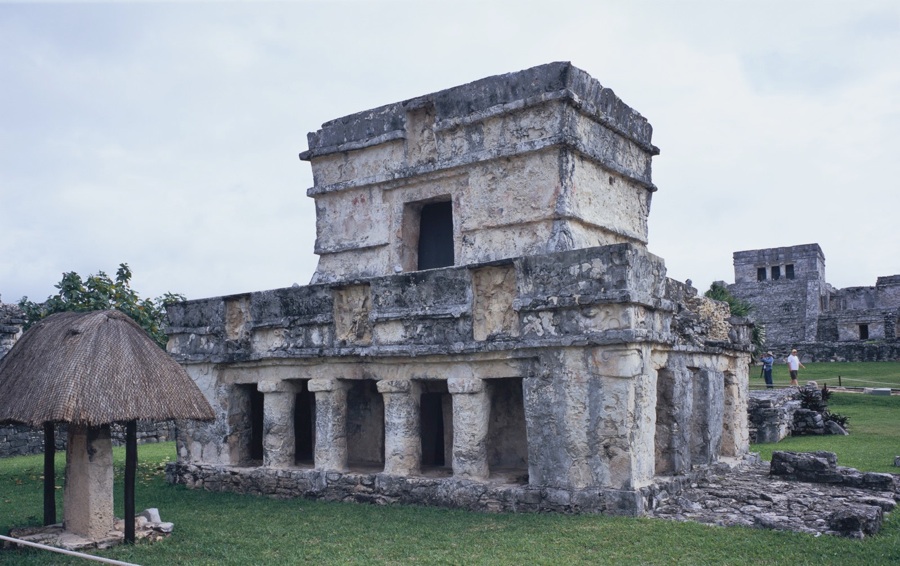The day after we visited Coba we briefly visited Tulum. Tulum is located beside a beautiful beach, a very scenic spot. I felt the architecture of the temples was very crude, reminding me of the Toltec-Mayan architecture of Chichen Itza. The temples were also very crudely executed, reminding me of Roman architecture near the end of the Roman Empire. So if you intend to visit this site, go for the beach not the temples.
According to the INAH Plaque at the site, Tulum’s architecture is similar to Chichen Itza and Mayapan and incorporating certain regional element of the East Coast style. Tulum’s structures are small and show little complexity, height, or quality. The Mayans covered the walls with stucco and the facades with modeled sculptures, as well as brightly colored paintings with a colorful finish and strong contrasts.
According to LONELY PLANET: MEXICO, 9th Edition, published September 2004, ISBN 1-74059-686-2, page 928, “Tulum” is Yucatec Mayan for “wall”. However, the Mayans called Tulum “Zama” meaning “dawn”. Archaeologists believe that the Mayans occupied Tulum during the Late Post-Classic Period (1200-1521 A.D.), and that it was an important port during its heyday. Ramparts (walls) surround 3 sides of Tulum, the fourth side being the Caribbean Sea. However, the majority of Mayans lived outside the city walls. The Mayans abandoned Tulum about 75 years after the “Spanish Conquest”. Tulum was 1 of the last cities that the Mayans abandoned.
For additional photos and information, please see the following link:





